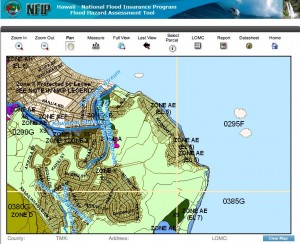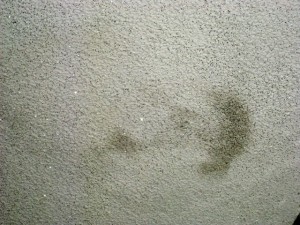Storms’ a Blowin’!
Or are they? The news the other day is that this will be a calmer hurricane season for Hawaii in 2012 than average. While that may not be much fun for the daredevils and storm chasers out there, I think most people will welcome riding out the remainder of the year with fewer causes for concern. Of course, predicting hurricanes — like any natural disasters — is subject to margins of error, but Hawaii is no stranger to tsunamis, earthquakes and the like.
That being said, let’s hope the nice folks at the Central Pacific Hurricane Center didn’t get their storm charts crossed (ok, ok, I know they really use GIS, remote sensing and other high-tech tools). But whenever I see news like this, it makes me think of the precarious nature of Hawaii’s ‘settled presence’ on our islands — namely, where we’ve decided to build homes and infrastructure. The ‘human layer’ on top of the existing physical island.
Last weekend, my girlfriend and I took a drive up the windward side to Kaaawa Beach Park. We were looking at all the places where the water comes right up to Kam Highway, at all the homes that are sitting right on the edge. And whether you believe in global warming or not, there’s too much evidence of global sea level rise to not be concerned if one of those homes is yours! (someday we’ll have to make a hard decision on just what we’re going to do when Kam Highway gets flooded over just one too many times for our comfort)Of course, this example is just from Oahu because that’s where I live. But I’ve been to Kauai, Big Island, Molokai and Maui enough to know that the same situation exists throughout the state. We now have shoreline setbacks to help prevent future construction in these dangerous areas (some islands adhering to stricter setbacks than others), but the annual hurricane season prediction is a good time to reflect, from a Hawaii housing perspective, on some basic ideas for living safer in the coastal zone:
1. Learn about the shoreline setbacks that exist in your island/county. Is it 40ft? Or 50ft plus an erosion multiplier?
2. Check up on your hazard and flood insurance — don’t skimp if you don’t have to
3. If you’re building any additions to your home, pay special attention to new building ideas that allow high winds to pass by with minimal damage
4. Don’t build any erosion control structures without TONS of due diligence. This means seawalls, revetments, groynes, piers and more. It’s the State policy to discourage such efforts of shoreline hardening (armoring).
5. If you’re in the market for a new home, think very hard about whether you want beachfront or not. Understand how the beach ‘behaves’ by the home you’re considering. Is it accreting or eroding? Is it subject to massive sand depletion and replenishment throughout the year? Know your beach before buying your home. In the long run, you may be safer and more at ease looking at the ocean from a bit further back.
Leave your comments below!



